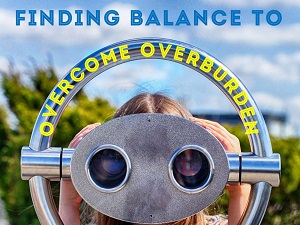At the foundation of any great business is the levelling of demand.
Every organisation has ways to collect demand information (quantities, size, patient condition, trim colour, viscosity, etc.) to help create plans to smooth their activities in the effort to give customers what they want at the right place, in the right quantities at the right time.
Of course, not having demand variability in the first place is the best solution but, for those who don’t have complete control of their markets, why is levelling so important?
Without a reasonable amount of balance (or at least the continuous pursuit of balance), the resources and the burden on those resources needed to meet customer needs is multiplied exponentially (at least in my experience and most likely yours).
The efforts to manage a system that manages those resources within this variable environment also becomes a monumental task and often results in a “hit and hope” situation.
Stop and think about this for a minute. Here’s an example to help:
You’re probably sitting at a desk right now. And not long ago, you were also probably writing something in your diary, post-it note or something nearby.
Well, let’s say your pen ran out halfway when you were writing that.
And what if, you didn’t have another in that top drawer at the ready. Or even worse, you did and those were just the ones you dropped in the drawer when those ran out of ink too!
Now, you’d have to get up, go to where stationary is kept, find the type of pen you like in the colour you need then march back to where you were working to finish your writing.
Was the problem the resources not being able to give more? Or was the problem not knowing how much we needed and to make sure it was in the right place when it was needed.
This is simply a metaphor but imagine if the ink in the pen was actually the resources in your business (people’s efforts, materials, energy, etc.) being used as activities are being completed.
Now, think of what just happened when they become completely ‘spent’ and couldn’t give any more to get the task done.
Do they focus on the activity at hand or do they have to leave in search of the solution to their immediate problem?
Where does this come from? Well, certainly not from the point where the work is being done or from the process owner itself.
Instead, it’s entirely up to management to understand the flow-on effects of their policies or thirst to grow before they’re ready and to improve the systems they give their teams to do their work so that customer needs are met.
It’s unfortunate, but I’ve seen this overburden result in workplace stress claims and the mis-allocation of “blame” on the individual to the point of disciplinary action, termination or the limiting of career development because of something that was out of that person’s control.
But I’ve also seen (and helped) organisations correct this cyclical course to instead engage their teams and becoming involved fixing the system for everyone’s benefit – from the customer all the way through to supplier.
This is a shared responsibility. Again, I’ll repeat, this is a shared responsibility.
Call it “keeping the demand within the balance control limits”, but so many organisations find themselves fire-fighting instead of fire-preventing by not letting their plans become unmanageable in the first place.
I’d value your opinion on this statement:
“The amount of flexibility needed in your resources (people, plant/equipment, materials, enabling technologies, etc.) is directly proportionate to the variability of the demand & complexity of the products and services you provide.”
What are your thoughts and experiences with creating system level stability before point improvement?
In your role, do you see sand castles being built today just to be washed away by the forces of waves tomorrow?
What will it take in your organisation to redesign your value delivery system from the foundation?
Copyright © 2016 TWO Consulting


